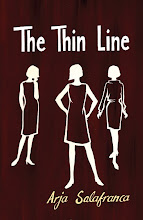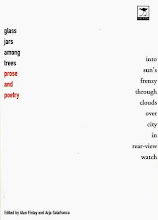Writer Chuck Palahniuk is off to interview movie star Juliette Lewis. Afterwards he’s going to write a profile of the actress called ‘In her own words’. A bold promise is implied in that title, but in his piece Palahniuk more than lives up to that promise:
“One time,” Juliette Lewis says, “I wanted to get to know someone better by writing down questions to him…”
She says, “The questions are more telling about me than anything I could write in a diary.”
She’s holding a handwritten list she’s just found and reads:“Did you ever stab someone or cut them intentionally with a sharp object?”
She reads: “Do you like asparagus?”
She reads: “Do you have a middle name?”
“Do cats frustrate you as pets, or do you admire their independence?”
Over the past twenty-four hours, she’s talked about her family, her father (Geoffrey Lewis), her career, the Scientology thing, getting married and writing songs. The songs are important because after years of being scripted, these are her words now.
Whenever people ask me what creative non-fiction, or creative journalism is, I point them to this essay. In 10 pages Palahniuk gets under the skin of Lewis, and whether or not you’re interested in the actress, and I wasn’t and am not, you keep on reading. There’s an immediacy to this piece achieved by the use of present tense throughout. Palahniuk talks to Lewis’s mother, follows her as she grinds coffee beans, and is there when the VCR breaks down. Throughout Palahniuk sprinkles the narrative with Lewis’s handwritten notes: “What’s the first image you have of the female body?” and “Do you look more like your father or your mother?” and “Did you ever fall in love with an animal in a way where you wished you could talk like human friends?”
Lewis is right: these questions reveal as much about her own preoccupations, concerns and interests as they would about anyone else. Palahniuk is playing interviewer, but so is Lewis. And you get a picture of this woman who is living in a rented house in Hollywood Hills, stark modern and yet filled with antique furniture. Juliette Lewis is alive in this piece – Palahniuk gained an unusual access to her life, an access that is rarely granted to most journalists. But he’s used it well: he hasn’t written a standard profile – he glosses over the “Scientology thing” as though it doesn’t matter, and only later driving past the Scientology Centre does he describe why she is into the religion. A regular, magazine or newspaper profile would have, I believe, leaped right into the Scientology thing, that’s the sensational part, “our readers would be interested in that aspect,” you can hear an editor saying. Imagine the coverline on a glossy mag: “Lewis says Scientology keeps her sane.” Would you want to buy it?
And yet, narrative journalism, creative non-fiction, call it what you will – it has a lot of names – is about much more than sensationalism. It’s about getting to the heart of a matter, or a person; it’s about using fiction techniques to tell a non-fiction story, it’s about making a piece of writing sing and spark, it’s about using words in a way that few writers of non-fiction dare to. In part that’s because it’s not expected of them. In South Africa, particularly, we have such a limited, unadventurous sense of journalism and reportage that creative non-fiction feels like a breath of fresh air. In the US you can subscribe to a journal called Creative Non-fiction, where all these techniques are used to astounding effect.
In an anthology called In Fact: The Best of Creative Non-fiction, I read ‘Finder’s Keepers: The Story of Joey Coyle’ by Mark Bowden. In 30 pages of writing the pace doesn’t flag once. You could be reading a gripping crime story. This excellent piece reads like fiction because Bowden uses direct speech, lively description, and rounded character observation. See for yourself.Here’s an extract:
Day One
Coming down made Joey Coyle feel desperate and confused. When he was high the drugfilled his chest and head with gusts of power so great he could barely breathe or think fast enough. This was how Joey spent his nights. When he slept it was during the day.
You don’t get more immediate than that. You’re inside Joey’s head now, 28-year-old Joey, working on the docks in Philadelphia in 1981 and still living in his mom’s house. The story is about Joey and two friends who find $1.2 million that had fallen out of a truck. They try to get away with keeping the money, even though they were spotted taking it. The story follows Joey’s increasing unease and obsession with trying to find a safe place to stash the money. Writer Bowden is right there, we’re there, in Philadelphia with the cops cruising the streets, looking for the make of car Joey and friends were driving, watching as Joey hides the money in first one place then another. In the notes which follow this piece, Bowden writes: “Scenes, dialogue, characters, plot, foreshadowing, metaphor, interior monologue … you name it, I use every technique I’ve ever read and admired.”
There are all sorts of narrative journalism, you can just as easily describe a Jewish divorce ceremony as the process of being shunned by your community or describe a misdiagnosis of cancer. These are all personal essays also found in this anthology and all take a different approach to telling their stories. Yet each is gripping. We’re not talking static essays here, such as the type most of us remember being forced to write at school, the type many of us run away from reading. “Essays are boring” seems to be the implicit assumption, and yes, they can be and sometimes are. But that’s only because the writer hasn’t gone to enough trouble, hasn’t taken delight in the language, hasn’t played with the process of writing and has simply stated facts in old boring ways. It doesn’t have to be like that.
The writers here know it, US novelist Barbara Kingsolver knows it, South African writer Don Pinnock knows it.
In her 1995 book High Tide in Tucson: Essays from Now or Never Kingsolver weaves the personal with more wide-ranging subjects. She uses humour and colloquial language to talk about some serious stuff; you never feel you have to wade through this because it’s really worthy and you really should be reading something other than all those escapist novels. She has a child (she’s since had another), and this child peppers many of her essays. “Civil Disobedience at Breakfast” begins with a description of their lives together:
I have a child who was born with the gift of focus, inclined to excel at whatever she earnestly pursues. Soon after her second birthday she turned to the earnest pursuit of languor, and shot straight through to the ranks to world-class dawdler. I thought it would be my death.
Like any working stiff of a mother keeping the family presentable and solvent, I lived in a flat-out rush. My daughter lived on Zen time. These doctrines cannot find peace under one roof.
But this isn’t a personal essay about life with a daughter on Zen time; it’s more wide- ranging than that. This is an essay about raising children, about giving them independence (or not), about reliving your own childhood as a parent, about the effect of parents’ behaviour on their own children, about the pull between wanting to be creative and having to watch another theatrical performance where the monster is tied up with Day-Glo shoelaces and pantyhose.
Kingsolver writes about nature, the Dewey decimal system, about divorce in a personal sense as well as a more abstract one travelling, and living in another country, the Spanish islands, the Canary Islands.
How’s this for the opening of a travel piece from ‘Somebody’s Baby’:
As I walked out of the street entrance to my newly rented apartment, a guy in maroon high-tops and a skateboard haircut approached me, making kissing noises and saying, “Hi gorgeous”. Three weeks earlier I would have assess the degree of malice and made ready to run or tell him to bug off, depending. But, now, instead, I smiled, and so did my four-year-old daughter, because after dozens of similar encounters I understood he didn’t mean me but her.
This was not the United States.
And then there’s Don Pinnock, associate editor at Getaway magazine, which means he gets to go lots of places and send back emails saying he’s in Paris this week, or wherever. It also means he gets to meet a lot of interesting people, to write columns on travel and the natural world, and makes even earthworms sounds interesting. Or bats. Bats? Yes bats. No fan of them myself, although that’s my own prejudice and ignorance, I kept on reading about them and other subjects I wouldn’t even have given a second thought to in essay after essay in Natural Selections and Love Letters to Africa.
In “Notes from Heaven” Pinnock finds himself in the Umfolozi wilderness:
The ripple of frogs counterpoints a night so still the ants seem to be walking on tiptoes. High overhead, tamboti and knobthorn trees are catching stars and a comet or two in their interlaced branches. … It feels good to be down on the naked skin of Africa in the small hours. I’m on night watch, probing the perimeter with a torch somehow less bright than my imagination, peering for predators and unwelcome ungulates: wishing them absent; hoping they’re there…
This is not common garden-variety travel writing. This is not the type of unadventurous story that recounts a trip from day one, arrival, to day 10, departure, and a sun sinks into the horizon type of story. Pinnock not so much pushes the boundaries as creates new ways of saying things, of making seemingly dry facts palatable, interesting and fascinating. From camels to dams to mediations on global warming, you’re with him all the way, urged on by his humour and his chatty tone.
The writers I have included here have created their own styles of writing. Each has a distinct voice, one that urges you with its creativity and uniqueness. And this is the type of writing that should be gracing our newspapers and magazines. It’s writing that lives beyond that day’s or that month’s deadline, it’s writing that makes you want to read while opening a window on the world.
Some books to look up:
Non-Fiction: True Stories by Chuck Palahniuk
Natural Selections: The African Wanderings of a Bemused Naturalist, Love Letters to Africa and African Journeys by Don Pinnock
In Fact: The Best of Creative Non-fiction Edited by Lee Gutkind
High Tide in Tucson: Essays from Now or Never by Barbara Kingsolver
Small Wonder: Essays
The Best American Essay series, published annually by Houghton Mifflin Company
The White Album by Joan Didion
Holidays in Hell by PJ O’Rourke
(First published as Dye Hard Press Newsletter 10)
Subscribe to:
Post Comments (Atom)





.jpg)

No comments:
Post a Comment